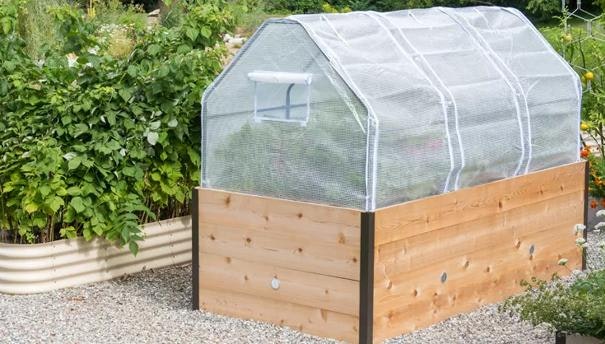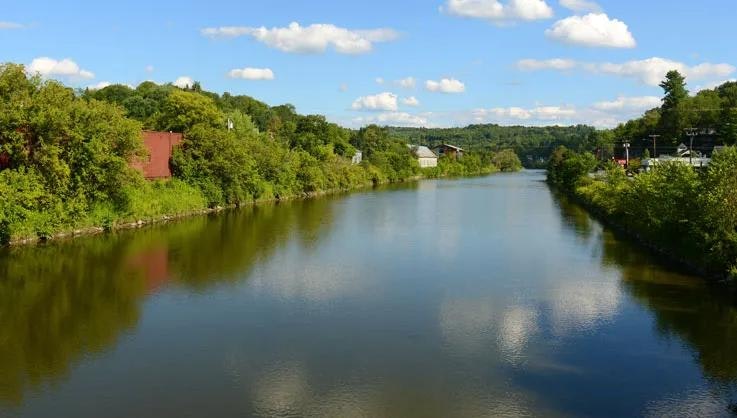Spend a week or two touring British flower gardens, and you'll come home with a whole new appreciation for how climbing plants can enhance a garden. Everywhere you turn the walls are covered with roses and climbing hydrangeas; the trees and shrubs are threaded with clematis; arches and fences are draped in honeysuckle and ivies; obelisks are woven with sweet peas, morning glories and thunbergia; passionflower vines, jasmine, mandevillea and bougainvillea fill pots and planters of every shape.
How to Choose a Plant Support
Is it sturdy enough? Choose supports that are sturdy enough for the vines you want to plant. Supports should be made of weatherproof materials (such as galvanized or powder-coated steel, painted or treated wood), especially if you are planting a perennial vine.
What type of plants do you want to grow? A climbing rose requires a different type of support than a sweet pea; pole beans need a different support from a tomato or cucumber plant. To learn more about which types of supports suit which types of plants, read How Plants Climb.
Where will this support be located in the garden? Decorative plant supports can serve as points of interest in the garden: arbors are great at marking an entry, freestanding trellises can provide privacy in a large open area, and obelisks provide a focal point at the end of a pathway. If you want to support cucumbers in your elevated raised bed or grow tomatoes in a patio planter, you'll want to choose a support that fits your available space.
Types of Plant Supports
Arches
These structures can add distinctive flair to your garden, no matter what the season. Design and placement are critical. Spend some time in your garden determining what style and scale structure would be compatible with your house and landscape. These structures are most often made of wood, which can be painted or stained to resist the elements. Steel and plastic versions are also available, and are a smart choice if the style suits your garden.
Freestanding Trellises
These trellises are often used to define a space or provide a sense of privacy. Sometimes permanently located, they are also relatively easy to move around the garden if you want to try out different effects. Morning glories, moonflower, clematis, sweet peas, and passionflower vines are all excellent candidates for a flat trellis.
Obelisks and Tripods
Both functional and decorative, these structures add a strong vertical element that can serve as a focal point in the garden. Like exclamation points, they're most effective when not overused. Make sure the structure is tall enough to support the type of plant you want to grow. Scarlet runner beans and vigorous varieties of morning glories, for instance, want a support that's 8 to 10 feet tall; they'll quickly overpower a 4-foot tripod. Bamboo canes make inexpensive and attractive tripods for the vegetable garden.
Cages and Ladders
Vegetable supports should be sturdy and made of durable materials, but also lightweight enough. to be removed at the end of the gardening season.
Our new Vertex Universal Tall Tower is available for both compact (determinate) tomato varieties as well as tall-growing (indeterminate) tomato varieties.
Fences
There are climbers to suit almost every type of fencing you can imagine—even chain-link fences. Climbing roses look beautiful draped over a post-and-rail fence. When they get a little help from strings or plastic netting, sweet peas look terrific growing against a picket fence. Even a functional border fence or lawn edging can take on new beauty when covered with flowering vines.
Wall Trellises
There are a couple options for training plants against a wall. Clinging plants like Boston ivy, can attach themselves to almost any wall with no other support necessary — however this can be structurally unsafe for houses in the long run. A wall-mounted trellis can provide sturdy support without causing permanant damage to either plant or home. Roses, bougainvillea, and Virgin's Bower are vigorous vining plants that grow well on a wall trellis.
Planter Trellises
Trellises sized specifically for planters, containers, and elevated raised beds make it possible to grow vining flowers and veggies on your patio and balcony.
Plant Support Inspiration
We love to hear from our customers! Check out the creative (and gorgeous!) ways our customers have used plant supports in their gardens.

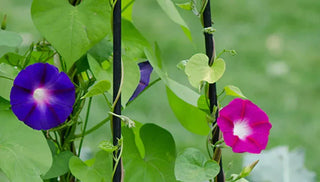



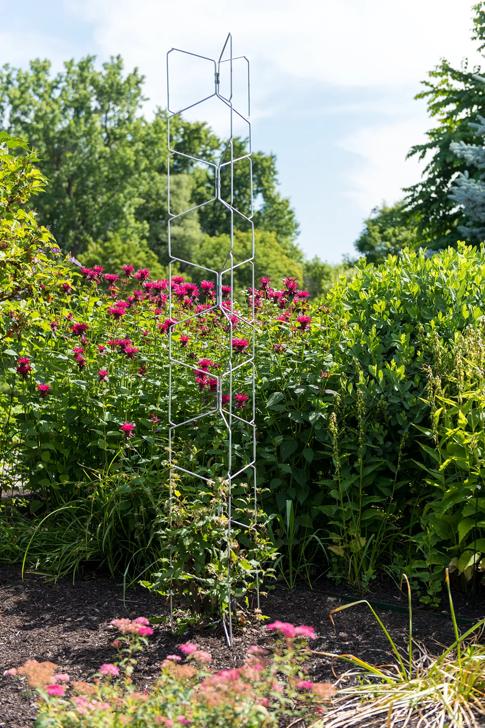
 Black-eyed Susan vine adds color and flair to this
Black-eyed Susan vine adds color and flair to this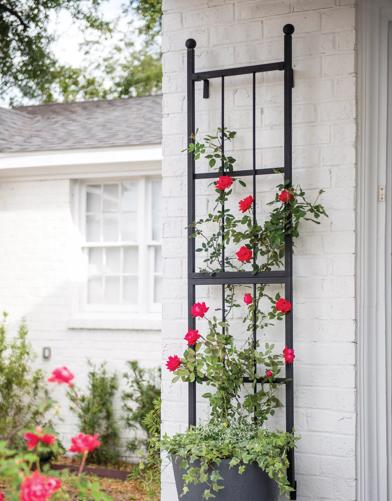 The
The The
The
